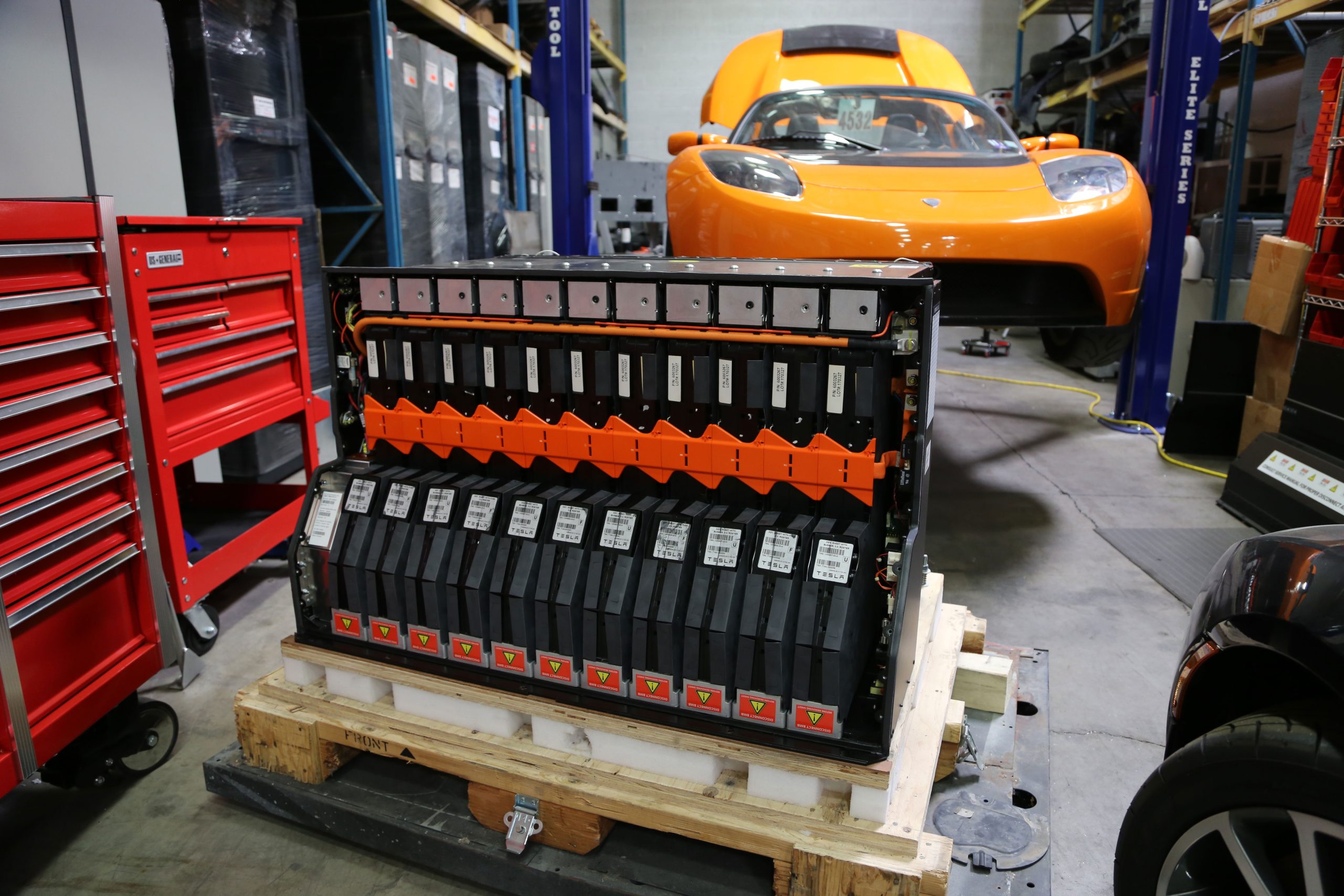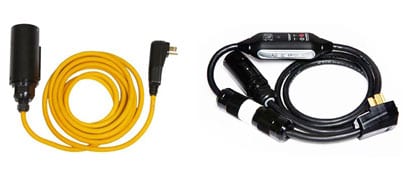Charging – 120 VAC or 240 VAC
Charging at 240 VAC with the UMC cable, which feeds 40 Amps to the Roadster is definitely faster than using the 120 VAC 15 Amp charge cable. A full charge at the yellow 120 VAC charge cable could take 30+ hours if range is depleted, and conveniently stores in the car and plugs into a regular wall outlets. What you gain in reduced charging times with a 240 charge, may sacrifice long term reliability, on key components in your car.
As you may have noticed, your range after a 120 VAC charge is usually higher than a quicker 240 VAC charge.
That is only the beginning. When you are charging at 240 VAC, there is an increased demands on the charging circuitry, and the byproduct is heat, which the car responds to by turning on your AC cooling system.
This results in some extra wear on the AC System, the AC Condensor Fans, and coolant pumping through the heat exchanger.
That is why your car makes a lot more noise when charging at the higher 240 VAC, 40 Amp rate.
A 120 VAC, 15 Amp charge does not use the AC system. In fact, charging at this level uses only the coolant pump which is the bubbling/hissing noise you normally hear from a parked Tesla Roadster as it is circulating battery coolant. If you can tolerate the longer charge times at 120 VAC, or just need to top off, the 120 VAC charge method is easier on the car.
Finally, forget using the “Storage Mode” charge option. It reduces your SOC to ~20%, which leaves very little margin for error. We have seen Roadsters bricked since the distance for charge to bricked is fast and brief. The negligible life pack extending advantages in this mode are not worth the risks.
We advise leaving the Roadster connected to the yellow charge cable in “Standard” mode (80%) at all times when not in use, and the firmware does a great job of deciding when to charge. This cable will draw a full 15 AMPS or a bit more from the outlet. The best connection is a DEDICATED outlet with a 20 AMP breaker. Normal residential code allows outlets to be “daisy chained” so you are never sure what ELSE is drawing from that circuit on the other side of the wall.
A final note, the GFI 15 AMP plug on the AC input side of this cable has a circuit board inside the plug. It is only good for 5 years or so, and easily replaceable. Here is where you can get a new one.
We may have the first 3.0 bricked battery pack

To address this need, Tesla began offering an upgraded 3.0 replacement pack last year, for $30K, with 35% more range, just in the knick of time. As a show of appreciation for the support of the first Tesla customers, Roadster owners, they generously offer these without intending to make a profit.
We recently purchased what we believe to be the first documented bricked 3.0 Battery Pack. We are now applying our battery recovery process to bring it back to life.
When a Roadster decides it can no longer charge a battery pack, it is deemed “bricked”, unusable, and needs to be replaced. This is not always the case. The Tesla Roadster battery management system design is often the culprit, preventing a charge to a battery pack below a certain level, when the pack really just needs some CPR and coaxing to bring it back to service life.
You may ask how a brand new, reconditioned, 3.0 battery pack ended up this way. A bricked battery pack always has a backstory. No one intentionally lets their battery pack drain so low they can no longer charge, disabling the car. No one can predict a charge cable circuit breaker tripping while away on business or a long vacation. Sometimes there is a sad story involving, a life changing event that reshapes priorities for a time that do not include maintaining charge levels on a Roadster and the result is a bricked car. (We will keep you posted in future articles how the recovery process is evolving on this pack)


